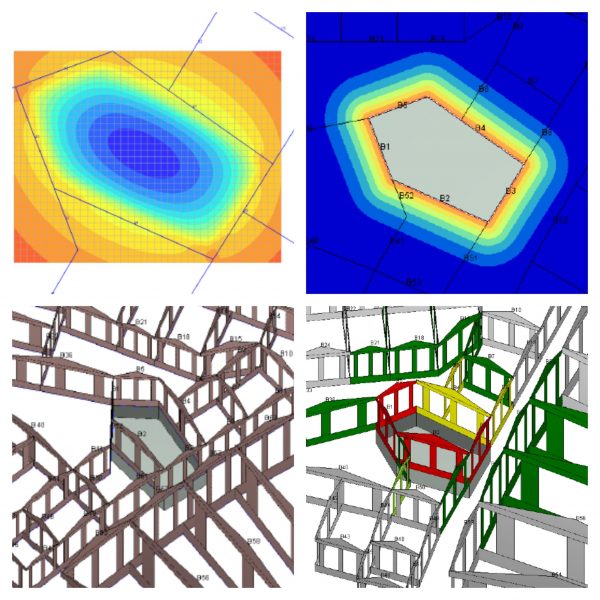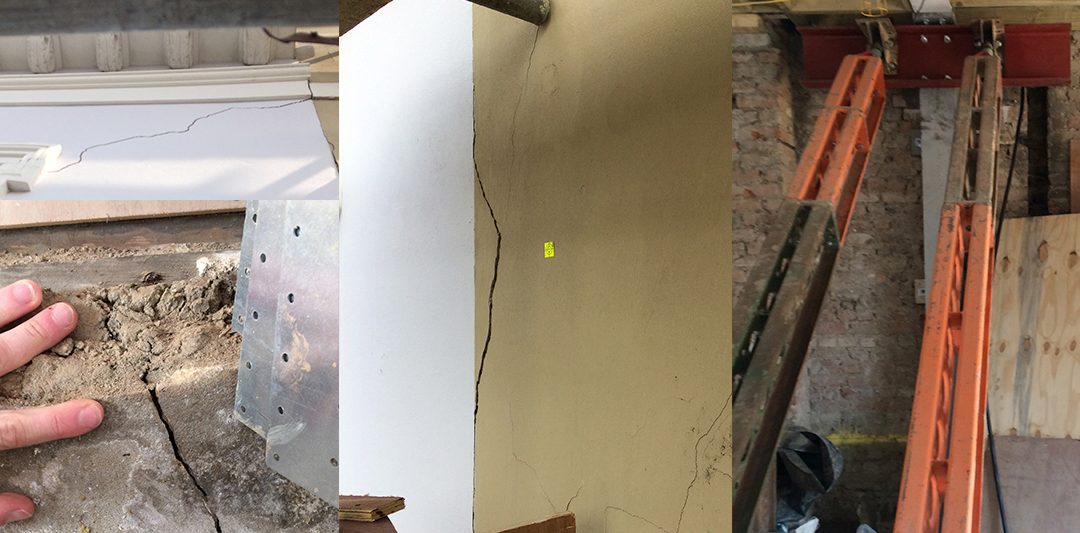Space is not the final frontier
Geotechnical • Regulation
New computer modelling software is dramatically improving the quality and validity of Ground and Water’s Basement Impact Assessments, resulting in several very challenging projects gaining planning approval.
In a world where space is a finite resource, we are increasingly adding storeys to existing buildings and creating multi-layer basements. While these vertical construction solutions address a myriad of challenges for architects and developers, they come with some significant structural issues given the additional stresses on the ground that supports and surrounds them.
Pressure induced soil displacements (Pdisp) and excavation induced soil displacements (Xdisp) must be calculated to ensure the ground below the building can withstand additional weight and to what extent the ground surrounding an excavation will move inwards.
Ground and Water uses Pdisp computer modelling to accurately undertake settlement and heave analyses for both vertical construction scenarios. This elastic analysis is more accurate than an empirical approach and is widely accepted for Basement Impact Assessments.
Also required for Basement Impact Assessments is consideration of damage to the walls of surrounding buildings. Ground and Water analyses the effects excavations have on adjacent walls by using Xdisp modelling; which is again widely accepted for Basement Impact Assessments.
Pdisp (Pressure induced soil displacements)
Pdisp models the elastic properties of soils encountered on-site, as well as the addition and removal of loads. Once analysed, horizontal and vertical soil displacements can be viewed in graphical and tabular form. Soil displacements generated by Pdisp are purely based on loads/load removals and the elastic properties of soils encountered.
Pdisp modelling is good for:
- Settlement/heave analysis of the basement itself
- Generating pressure induced displacements to be imported into Xdisp
Xdisp (Excavation induced soil displacements)
Xdisp models any excavations which have been scoped into the investigation. CIRIA movement curves, or user generated curves, can be applied to each wall of the excavation. Soil displacements generated by Xdisp are associated with the applied curves to the excavation, as well as any imported displacements from Pdisp, should they be desired.
Xdisp also models the walls of surrounding buildings. Based on the soil displacements generated, the category of damage to each building wall can be calculated. The damage categorisation is based on the widely accepted Burland Damage Category Scale.
Xdisp modelling is good for:
- Combining pressure induced and excavation induced soil displacements, around the basement
- Ground movement analysis for walls of surrounding buildings.
A collage of images, with explanations, taken from a recent project can be viewed below.

Top Left: A Pdisp model showing the vertical soil displacement at basement level, based on changes to the pressure. The blue area in the centre of the proposed basement indicates heave, whereas the orange/red shades indicate less heave/settlement.
Top Right: An Xdisp model showing the vertical soil displacement around a proposed excavation, based on ground movement curves. The orange area immediately from the basement shows areas of settlement, decreasing to areas of negligible vertical movement, shown by the blue shading.
Bottom Left: An Xdisp model showing a modelled excavation and the surrounding walls of nearby buildings.
Bottom Right: Xdisp Model showing the damage categorization of the walls surrounding a proposed excavation, based on the Burland Damage Category Scale. Each colour presents the damage category of a wall, with red indicating Category 4 damage, decreasing to green which is Category 0 damage.
Win, win and more wins!
Using the two modelling software packages Pdisp and Xdisp, the validity and accuracy of various projects has remarkably increased, especially for those including basement excavation and construction. Given that calculations are done automatically, the risk of human error has decreased and the use of daunting spreadsheets is no longer required. The models also provide a much more comprehensive and time efficient solution to ground movement analyses. An additional benefit is that informative and aesthetically pleasing outputs can be produced, helping clients understand the results of the investigation.
Pdisp and Xdisp have improved the quality of our reports and been a big help in getting some challenging projects accepted and approved by planners.
For more information on Basement Impact Assessments, contact Ground and Water.
